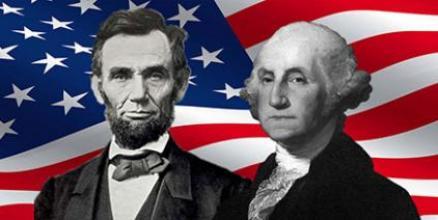President’s Day

 With the third quarter drawing to a close, President’s Day still serves as a valuable break from the emphatic speed of our shortest portion of the school year. In the rush toward Spring Break, not many stop to consider the true value of President’s Day as more than a break and a three-day weekend. With that being said, the perennial holiday does include some interesting backstory.
With the third quarter drawing to a close, President’s Day still serves as a valuable break from the emphatic speed of our shortest portion of the school year. In the rush toward Spring Break, not many stop to consider the true value of President’s Day as more than a break and a three-day weekend. With that being said, the perennial holiday does include some interesting backstory.
When was President’s Day (or Washington’s Birthday) created?
Created in 1805 to celebrate George Washington’s birthday on February 22nd, President’s Day was solely an indicator of the cherished president’s birthday and a memento of his service as the first president. Many issues with the holiday quickly bubbled up, specifically concerning the confusion of calendar systems and changed dates. According to the Julian-style calendar, which England used until 1752, the holiday landed on February 11th. For those using the Gregorian calendar, the event remained on February 22nd. The confusion in time would be later amended by a full transition to the Gregorian calendar, but the holiday was still slated to change in the coming centuries. By 1880, the holiday had become a law through Congress, and President’s Day (known at the time as Washington’s Birthday) became the first federal holiday to represent a single figure.
Over 200 years since the original creation of the holiday, Congress passed the Uniform Monday Holiday Act; an act that moved several federal holidays to Mondays in order to create more three-day weekends for American workers. In the passing of this bill, Congress moved Washington’s Birthday from February 22nd to the third Monday of February. Despite discussions of changing the name of the holiday, no formal change to the name was ever applied.
Despite the roots of the holiday, the United States saw the term ‘President’s Day’ spread wildly in popularity among retailers and businesses across the country. Abraham Lincoln, also born in February, was grouped into the holiday celebration as companies used the new moniker to increase sales during the three-day weekend. The increase of use with the holiday’s new public title allowed uniformity for states in the context of celebrations for Lincoln, who had only previously been celebrated by individual states and under various names.
Today, despite never being formally changed to the popular name, President’s Day represents more than a three day weekend. The holiday is a celebration of our most successful and pivotal presidents born in the shortest month! When you wake up late this Monday, take a second to reflect on the weird, yet interesting, history of the holiday.







